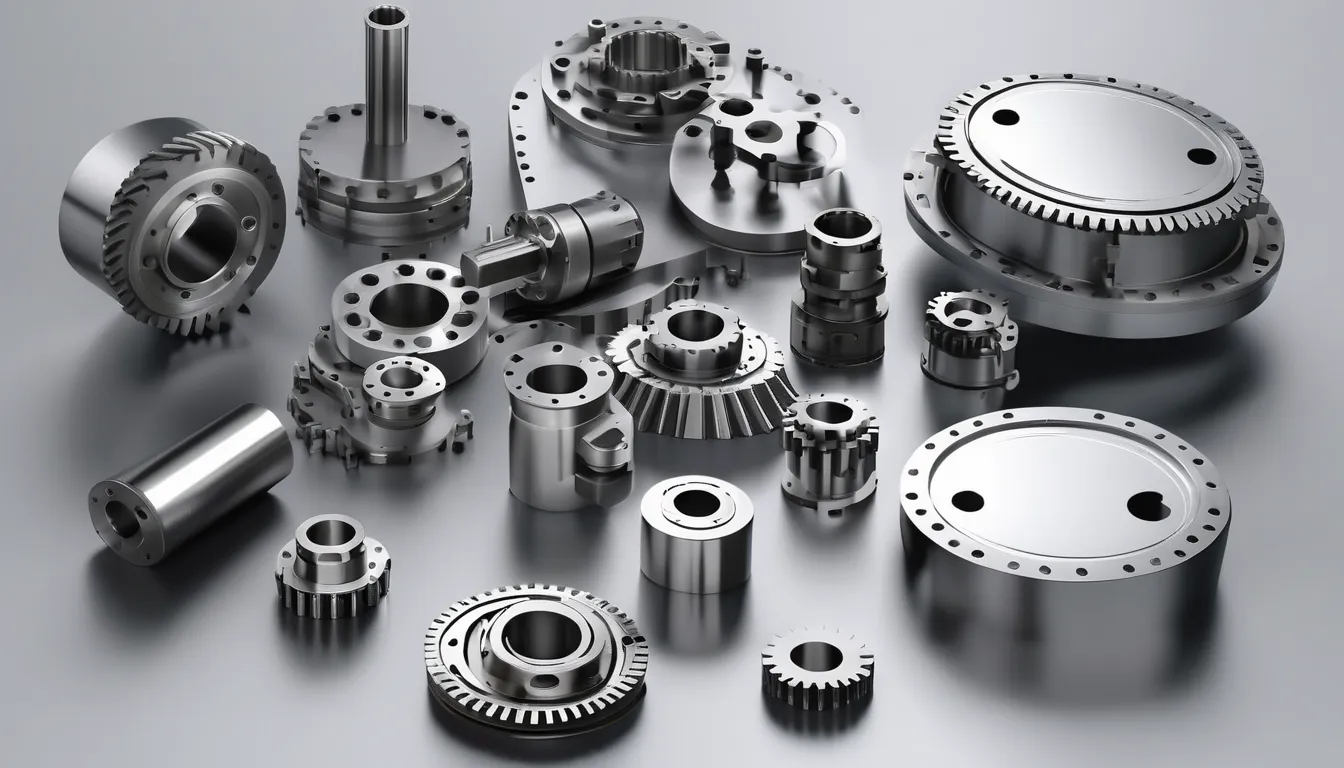Understanding the Supply Chain of Industrial Gearbox Manufacturing

When you think about the supply chain in industrial gearbox manufacturing, it’s crucial to consider how each step interconnects to create a reliable product. From sourcing raw materials to the final assembly, every link plays a significant role in the overall efficiency and quality of the gearboxes. You might not realize how intricate these processes are and the challenges manufacturers face in maintaining a smooth flow. Understanding these complexities could reveal insights that impact not just production but also market competitiveness. So, what are the key factors that truly drive success in this supply chain?
Overview of Gearbox Manufacturing
industrial gearbox manufacturer es play a crucial role in various industrial applications, converting high-speed input into controlled output. When you think about gearbox manufacturing, understanding the processes involved is vital. You start with design, where engineers create blueprints tailored to specific applications. These designs consider factors like torque requirements, efficiency, and size constraints.
Once the designs are finalized, you move on to the production phase. Here, skilled workers and advanced machinery collaborate to fabricate the components. Methods like casting, machining, and heat treatment help ensure the parts meet stringent quality standards.
After manufacturing, the assembly process takes place. This is where you see individual components come together, forming a functional gearbox.
Testing follows assembly, and it’s crucial. You can’t overlook quality assurance checks that evaluate performance under various conditions. This step ensures that the final product meets industry regulations and customer expectations.
Sourcing Raw Materials
Sourcing raw materials is a foundational step in the gearbox manufacturing process. You need to ensure that you secure high-quality materials, such as steel, aluminum, and various alloys, to create durable and efficient gearboxes.
It’s essential to identify reliable suppliers who can provide consistent quality and timely delivery. When evaluating suppliers, consider their production capabilities, certifications, and reputation. You don’t want to compromise on quality, as inferior materials can lead to mechanical failures and increased warranty claims.
Establishing strong relationships with your suppliers can also lead to better pricing and priority during shortages.
You should also think about the sustainability of your sourcing practices. Nowadays, many manufacturers are opting for eco-friendly materials and suppliers that adhere to sustainable practices.
This not only helps the environment but can also enhance your brand’s image and appeal to socially conscious customers.
Production Processes
The production processes involved in manufacturing industrial gearboxes are crucial to achieving the desired performance and reliability.
You’ll find that these processes typically begin with precision machining of the gearbox components, including the casing, gears, and shafts. CNC (Computer Numerical Control) machines are often employed for their accuracy, ensuring that each part meets stringent specifications.
After machining, you’ll move on to assembly, where you’ll carefully fit the components together. It’s essential to follow a systematic approach here, as any misalignment can lead to operational issues.
You’ll use various fastening methods, such as bolts and screws, to secure the parts in place.
Next, you’ll focus on surface treatment processes, like heat treatment or coating, to enhance durability and resistance to wear. Each treatment needs to be applied correctly to ensure the gearbox can withstand the demands of industrial applications.
Quality Control Measures
After assembling and treating the components, implementing effective quality control measures is vital to ensure the gearboxes meet industry standards and perform reliably. You’ll want to focus on several key areas, including inspection, testing, and documentation.
Here’s a quick overview of essential quality control measures:
| Quality Control Measure | Description | Frequency |
|---|---|---|
| Incoming Material Check | Inspect raw materials for defects before production begins. | Every shipment |
| Dimensional Inspection | Measure critical dimensions of components to ensure they meet specifications. | Every batch |
| Functional Testing | Test gearboxes under load to verify performance and reliability. | Every unit |
| Surface Finish Inspection | Check the quality of surface finishes to prevent wear and tear. | Random sampling |
| Documentation Review | Ensure all quality control records are complete and accurate. | Continuous |
Distribution and Logistics
Successful distribution and logistics are crucial for delivering industrial gearboxes efficiently and on time. You need to ensure that every component of the supply chain works seamlessly together, from manufacturing to final delivery.
Start by choosing reliable transportation partners who understand the specific requirements of industrial gearboxes. Their expertise helps you navigate challenges like handling heavy loads and ensuring secure packaging.
Next, stay on top of inventory management. Maintaining optimal stock levels prevents delays and keeps production flowing smoothly. Implementing advanced tracking systems allows you to monitor shipments in real-time, providing you with valuable insights into potential hiccups.
Communication is key. Keep your team informed about shipping schedules and any changes that might occur, so everyone stays aligned. You should also establish strong relationships with logistics providers, as they can offer tailored solutions to meet your needs.
Lastly, continuously evaluate your distribution strategy. Look for areas to improve efficiency, reduce costs, and enhance delivery times. By staying proactive, you’ll not only meet customer expectations but also build a reputation for reliability in the industrial gearbox market.
Conclusion
In conclusion, grasping the supply chain of industrial gearbox manufacturing is crucial for your success in this competitive market. By focusing on quality raw materials, efficient production processes, and effective logistics, you can enhance your operations and meet customer demands. Don’t underestimate the importance of quality control throughout the journey; it safeguards your reputation and ensures reliability. By mastering these interconnected elements, you can streamline your supply chain and position your business for growth and efficiency.
